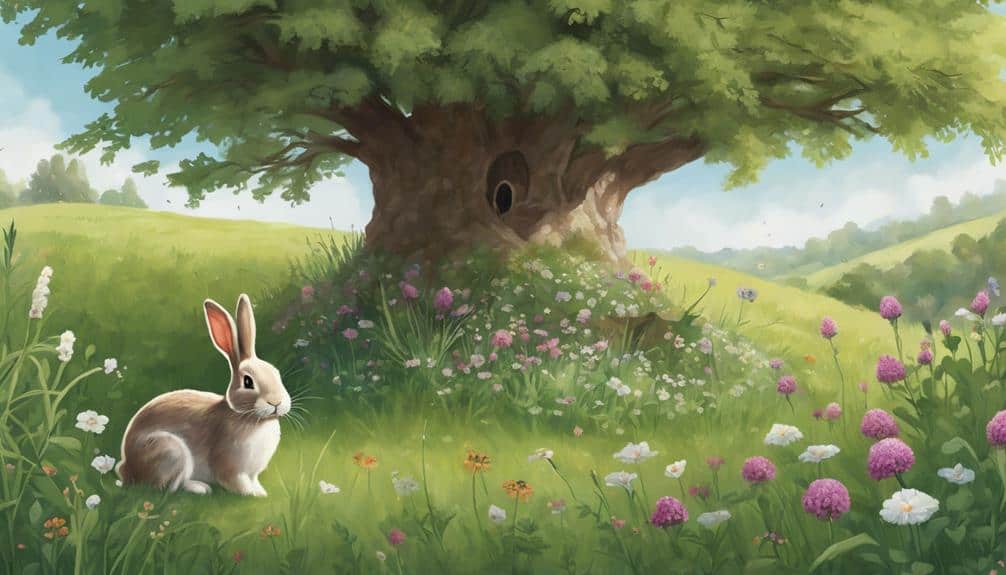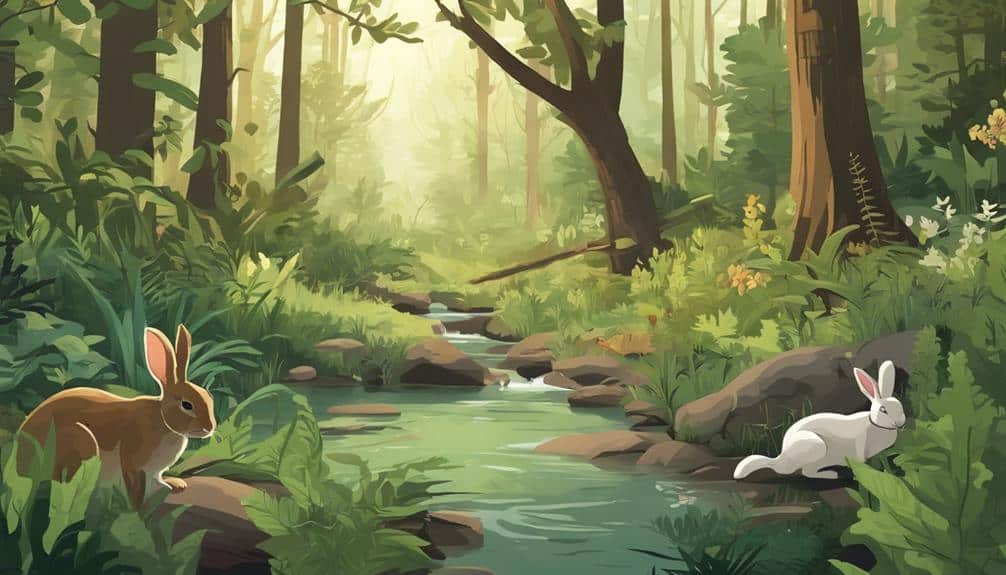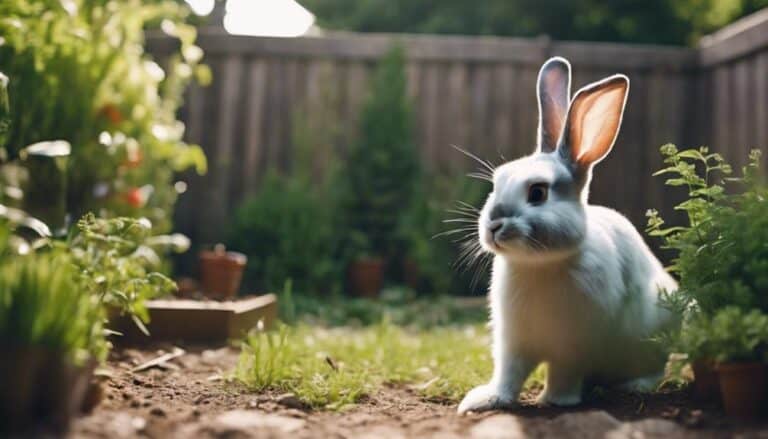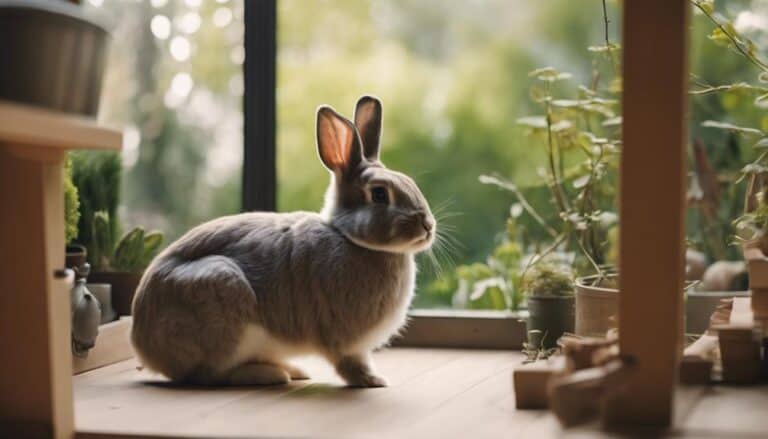Did you know that over 50% of rabbit species worldwide are considered threatened or endangered? Understanding the significance of a natural bunny habitat goes beyond safeguarding these furry creatures.
It plays an essential role in maintaining the delicate balance of our ecosystem. By exploring the intricate connections between rabbits and their habitat, you will uncover a deeper appreciation for the impact of preserving their natural surroundings.
Contents
Key Takeaways
- Bunny habitats support biodiversity and ecosystem health.
- Rabbits shape landscapes through grazing and digging activities.
- Conservation efforts benefit plant and animal richness.
- Natural habitats sustain soil health and nutrient cycling.
Importance of Natural Bunny Habitats

Natural bunny habitats play an important role in supporting biodiversity through their grazing and digging activities. Rabbits, considered keystone species in the UK, help create bare soil patches that are essential for the growth of rare plants and invertebrates. Their grazing behavior not only shapes the landscape but also contributes essential nutrients to the soil, benefiting neighboring flora and fauna. By maintaining open areas through their digging, rabbits prevent the dominance of certain plant species, hence promoting a diverse range of vegetation.
The presence of rabbits in natural habitats is critical for ecosystem balance. Without these furry creatures, many species that rely on the conditions created by rabbits may suffer, leading to a decline in biodiversity. Conservation efforts aimed at preserving natural bunny habitats have shown positive impacts on the overall richness of plant and animal life in these ecosystems. Protecting these areas is essential for ensuring the continued nutrient contribution, biodiversity support, and ecological stability that rabbits provide.
Benefits of Natural Bunny Habitats
Rabbits in their natural habitats play an important role in shaping the ecosystem through their grazing and digging activities, which contribute greatly to the overall biodiversity and health of the environment. Wild rabbits, by foraging on various plants in their habitat, help control vegetation growth, preventing any one plant species from dominating the area. This grazing behavior promotes plant diversity, which in turn supports a wide range of other wildlife that rely on these plants for food and shelter.
Moreover, the digging behavior of wild rabbits aerates the soil, allowing for better water infiltration and nutrient absorption by plant roots. This activity also helps in the decomposition of organic matter, contributing to soil health and overall nutrient cycling within the ecosystem. By conserving natural bunny habitats, not only are we ensuring the well-being of wild rabbit populations, but we're also safeguarding endangered species that share these habitats and preserving the delicate balance of unique ecosystems. Prioritizing the preservation of these habitats is important for maintaining biodiversity and ecosystem resilience.
Factors Affecting Bunny Habitats

Within bunny habitats, the availability of food, community size, and territorial range are key factors that greatly influence the sustainability and functionality of these environments. Food availability plays an important role in the well-being of rabbit communities, as they heavily rely on vegetation for sustenance.
Larger rabbit communities require more extensive territorial ranges to meet their needs adequately. The layout of burrows within these habitats reflects the hierarchical structure present within rabbit communities, with different areas designated for specific purposes.
Vegetation in bunny habitats serves as essential hiding spots, providing safety and protection against predators. Sufficient hiding places are essential for the safety and overall health of rabbits, allowing them to thrive in their natural environment.
Creating Ideal Bunny Environments
Consider the meticulous planning and thoughtful design required to establish supreme environments that cater to the diverse needs of wild rabbit populations. Creating ideal bunny environments is essential for supporting biodiversity and maintaining ecosystem balance. These habitats provide vital shelter, food sources, and safety for wild populations, promoting species diversity within the ecosystem.
To guarantee the well-being of wild rabbits, ideal environments should mimic their natural habitats as closely as possible. This includes incorporating features like burrows for shelter, diverse vegetation for foraging, and open spaces for running and playing. By meeting these requirements, well-designed bunny habitats encourage natural behaviors and help in maintaining healthy rabbit populations.
Establishing ideal bunny environments not only benefits the individual rabbits but also contributes to the overall health and survival of wild rabbit communities. It's essential to prioritize the creation of such habitats to support the well-being of these fascinating creatures and maintain the delicate balance of the ecosystem they inhabit.
Sustaining Bunny Habitats

Enhancing the sustainability of bunny habitats involves preserving and nurturing the intricate ecosystems where these creatures thrive.
- Protecting natural habitats is critical for sustaining biodiversity and guaranteeing the health of various species that depend on these ecosystems.
- Wild rabbits contribute to ecosystem balance through their grazing and digging activities, creating bare soil patches that support the growth of rare plants and provide habitats for invertebrates.
- The presence of wild rabbits in their natural habitats helps maintain the overall health and diversity of wildlife populations.
- Livestock grazing has a less positive impact on the land compared to the activities of wild rabbits in their natural habitats, making the preservation of these areas even more essential.
- By safeguarding natural bunny habitats, we can secure the long-term survival of numerous species and maintain the delicate balance within these ecosystems.
Frequently Asked Questions
What Is the Role of a Rabbit in Its Habitat?
In a rabbit's habitat, their grazing behavior helps maintain ecosystem balance by impacting soil health, seed dispersal, and vegetation control. They provide nesting sites, support biodiversity, and reduce habitat fragmentation, all while benefiting from burrowing advantages.
What Is a Bunny's Natural Habitat?
In a bunny's natural habitat, burrow construction is crucial for predator evasion, social interactions, and mating rituals. Vegetation supports foraging behavior, habitat degradation threatens territorial boundaries, and seasonal changes affect population dynamics. Environmental adaptations guarantee the community's survival.
What Are the Needs of a Bunny Habitat?
In a natural bunny habitat, shelter requirements include hiding spots like double-entry huts for safety. Food sources, water access, and social interactions are important. Predators and threats must be considered for their well-being. Temperature regulation and mating rituals are essential.
Why Are Wild Rabbits Important?
Wild rabbits are essential for ecosystem balance by supporting biodiversity, wildlife conservation, seed dispersal, and pest control. Their presence prevents overpopulation of certain species, enhances soil health, and contributes to the natural beauty of habitats.
How Can Creating a Natural Habitat Benefit Bunnies?
Creating a natural bunny habitat has several benefits for these furry creatures. Providing ample space, shelter, and a proper diet are essential natural bunny habitat tips. This type of environment encourages physical activity, exploration, and mental stimulation, leading to overall better bunny health and wellbeing.
Conclusion
To sum up, keeping natural bunny habitats is vital for the well-being of rabbits and the ecosystem.
For example, a study in the Pacific Northwest found that preserving grasslands and shrublands led to an increase in bunny populations, which in turn supported the presence of other wildlife species such as birds and small mammals.
By protecting and enhancing bunny habitats, we can guarantee a healthy and balanced environment for all species to thrive.






